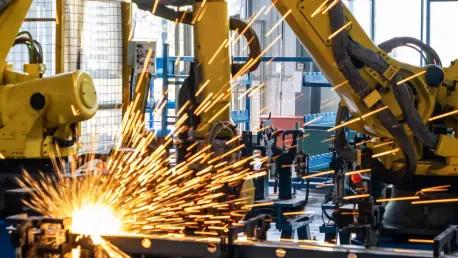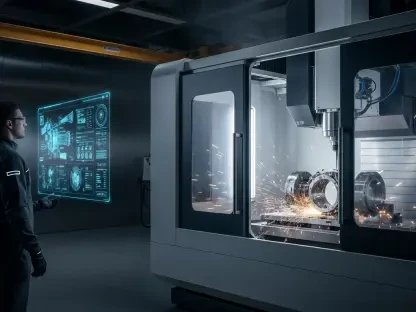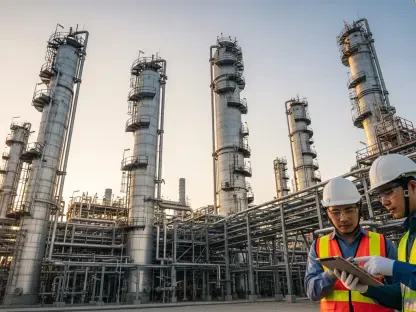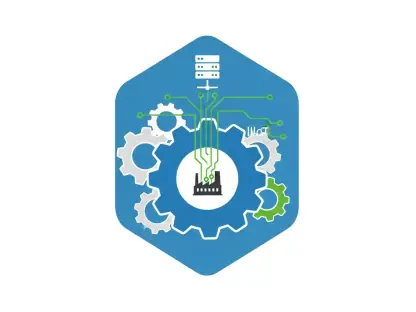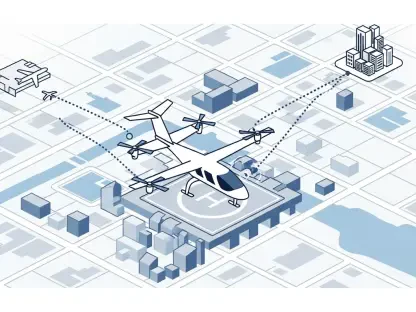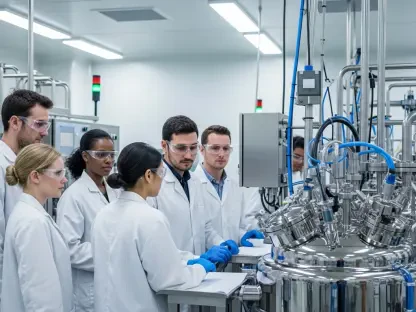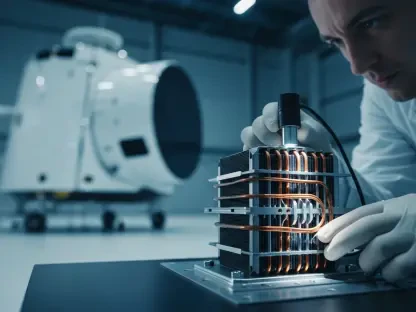The landscape of U.S. manufacturing is undergoing a significant transformation with Hyundai Motor Group at the forefront, pioneering advancements in factory automation. With a bold investment of $21 billion dedicated to innovation and automation within the United States, Hyundai is redefining traditional manufacturing paradigms by integrating advanced robotics into its production processes. At the heart of this transformation is the strategic implementation of Atlas humanoid robots at the Metaplant America facility in Georgia, a decision that underscores Hyundai’s commitment to leading the charge in mobile robotics. The collaboration with Boston Dynamics, acquired by Hyundai from SoftBank, showcases its intent to merge cutting-edge robotics with automotive manufacturing, setting a new standard in production efficiency.
Hyundai’s Strategic Investment in Robotics
Commitment to Factory Automation
Hyundai’s investment is not merely a financial maneuver but a strategic initiative to enhance manufacturing efficiency and elevate the company to the pinnacle of technological innovation. By deploying Atlas humanoid robots, Hyundai is streamlining its assembly processes, reducing reliance on manual labor and increasing production throughput. These robots are part of a broader ecosystem of automation at the Georgia plant, which currently employs Spot robots for industrial inspections. These inspections ensure high-quality standards and explore innovative solutions for tasks like car door handling during assembly. Although specific details about the number of Atlas robots to be deployed and their exact roles have not been disclosed, their introduction marks a significant milestone in Hyundai’s journey toward complete automation.
The integration of robots like Atlas aligns with Hyundai’s objective to produce a significant volume of electric and hybrid vehicles annually. With an initial goal to manufacture 300,000 units, the company plans to eventually elevate this figure to 500,000 units per year, contributing to a larger target of 1.2 million vehicles in the U.S. annually. Achieving this objective requires not only cutting-edge technology but also a strategic understanding of production dynamics, which Hyundai’s investment in robotics is poised to facilitate. The automation initiative is a pivotal step toward realizing a 70% increase from previous production output levels, demonstrating the potential impact of robotics on enhancing manufacturing efficiency.
Navigating Market Challenges
Hyundai’s focus on domestic automation stems from various challenges, including tariffs on imported automobiles, which press the need for enhancing local production capabilities. Despite facing a global sales slowdown, the company’s U.S. sales figures have risen by 4 percent, reflecting robust consumer demand within North America. This trend highlights the critical importance of maintaining a strong production base in America to cater to the burgeoning market. Hyundai’s vehicles, known for their competitive pricing, especially in the midrange segment, continue to resonate with consumers. By increasing domestic production capacities, Hyundai intends to maintain attractive pricing and circumvent the financial implications of tariffs, consolidating its growth trajectory in a competitive landscape.
In this context, Hyundai’s automation strategy is not solely about increasing production numbers but also about ensuring continuity amidst global economic pressures. The automaker’s commitment to integrating robotics in production further underscores its adaptability in the face of market challenges, reinforcing its brand strength and market presence. Through strategic automation, Hyundai is fortifying its position and demonstrating resilience amid evolving industry dynamics, meeting both current market demands and preparing for future growth prospects.
Hyundai’s Robotics Integration: A Strategic Shift
Advancing Mobile Robotics Capabilities
Hyundai’s collaboration with Boston Dynamics represents a confluence of automotive expertise and robotics innovation, aimed at revolutionizing the manufacturing domain. This partnership is emblematic of Hyundai’s vision to not only lead in the automotive sector but also become a powerhouse in mobile robotics. By integrating Atlas robots into its production processes, Hyundai is embracing a future where robotics and manufacturing converge seamlessly, driving operational efficiency and redefining industry standards. The use of advanced robotics signifies a shift toward intelligent, adaptable manufacturing systems capable of enhancing production quality and consistency while minimizing human error.
The Metaplant America facility is at the epicenter of this transformation, serving as a testing ground for pioneering robotic solutions. Here, Hyundai employs cutting-edge technologies to tackle complex manufacturing tasks, reducing lead times and optimizing resource utilization. By doing so, Hyundai is setting a precedent for the adoption of robotics in large-scale manufacturing environments, paving the way for further innovation and development within the industry. This strategic shift not only boosts Hyundai’s production capabilities but also establishes it as a key player in the global robotics landscape, showcasing its leadership in integrating technology and manufacturing.
Future Prospects and Industry Impact
As Hyundai forges ahead with its automation strategy, the broader implications of this move are significant for the automotive and manufacturing industries. By leveraging robotic technologies, Hyundai is transforming not only its production capabilities but also influencing industry standards and expectations. The Metaplant America facility, equipped with state-of-the-art robotics, serves as a blueprint for future factories, illustrating the potential of advanced technology to drive efficiency and innovation. This initiative is likely to inspire other manufacturers to adopt similar approaches, fostering a culture of technological advancement across the sector.
Hyundai’s investment in robotics aligns with broader industry trends toward sustainability and digital transformation, as manufacturers seek to enhance efficiency and reduce their carbon footprint. The automation of production processes contributes to these goals by optimizing resource use and minimizing waste, thereby supporting sustainable manufacturing practices. As Hyundai continues to integrate robotics into its operations, it is poised to lead the way in creating a more efficient, sustainable future for the automotive industry, capitalizing on the synergy between technology and manufacturing to unlock new possibilities and opportunities.
Conclusion: A New Era of Innovation
Hyundai’s investment goes beyond a simple financial move; it’s a strategic push to refine manufacturing efficiency and position itself at the forefront of technological advancements. By integrating Atlas humanoid robots, Hyundai is optimizing its assembly processes, minimizing dependence on human labor, and boosting production rates. These robots complement an extensive automation ecosystem at Hyundai’s Georgia plant, where Spot robots perform industrial inspections aimed at maintaining high-quality standards and innovating solutions for tasks such as handling car doors during assembly. While specific details about the number and duties of Atlas robots are yet undisclosed, their deployment marks a notable step in Hyundai’s path toward full automation.
This robotic integration aligns with Hyundai’s goal to produce a significant volume of electric and hybrid vehicles annually. Starting with a target of 300,000 units, Hyundai plans to eventually increase this figure to 500,000 per year, contributing to an overarching target of 1.2 million vehicles in the U.S. annually. The initiative is crucial for achieving a 70% production boost, showcasing robotics’ vital role in driving manufacturing efficiency.
